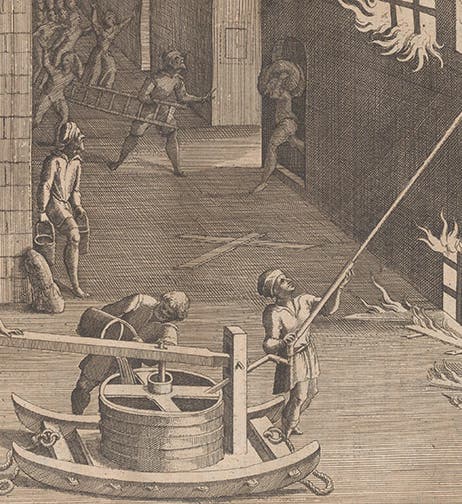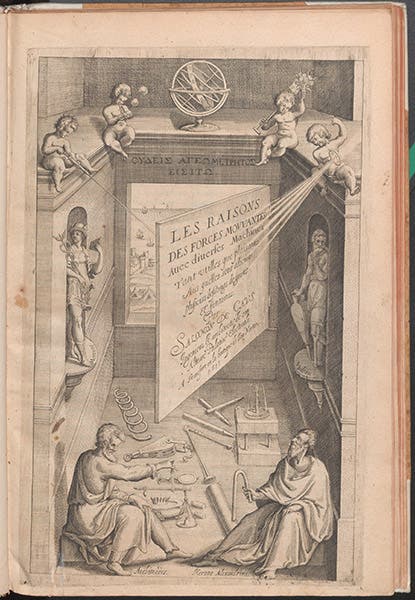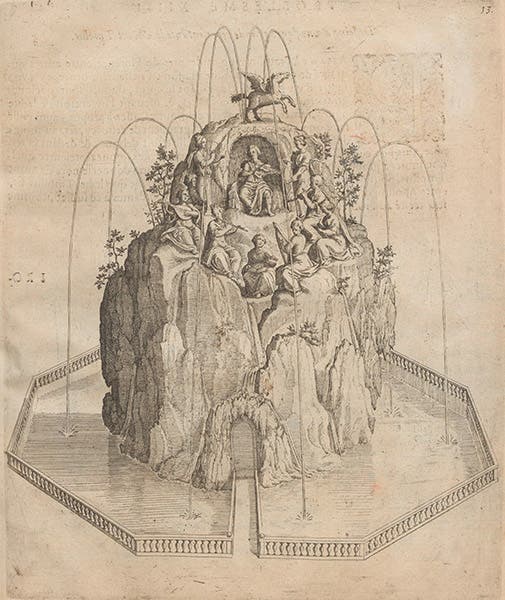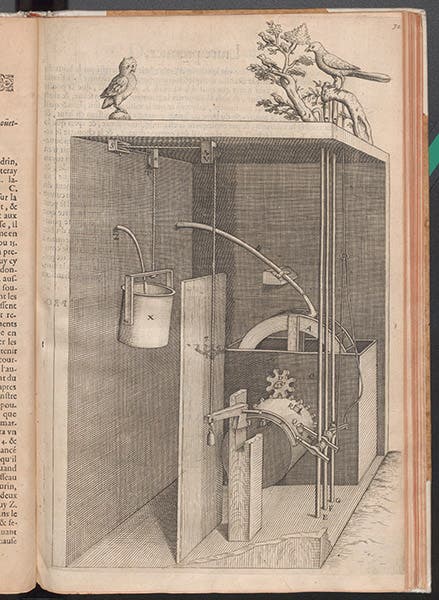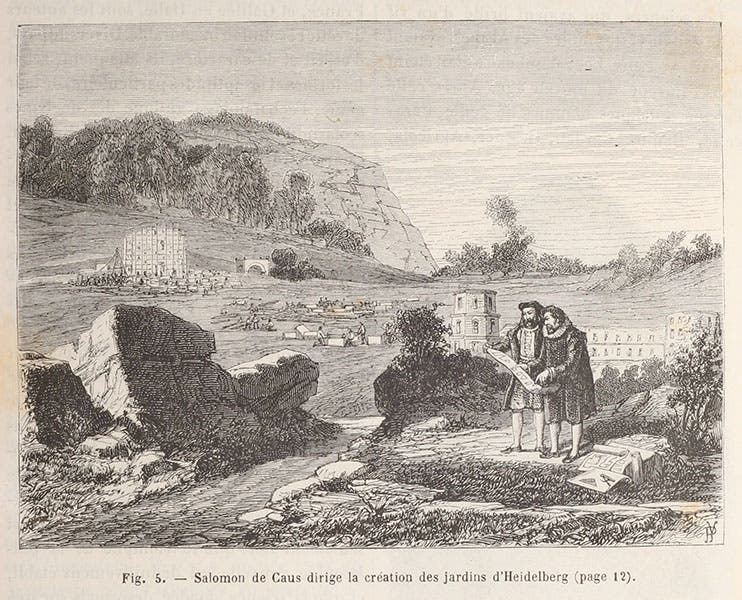Scientist of the Day - Salomon de Caus
Salomon de Caus was a French artisan-engineer who was born in Dieppe in 1576, and died in 1626. We do not have a birthday or a death day for de Caus, but we decided to feature him today anyway, because he deserves our notice, and because we have several of his books in our collections. Caus had an amazing variety of skills; he was an architect, inventor, hydraulic engineer, and designer and builder of fountains, gardens, and grottos. As a designer for hire, he worked in Paris, in London, and in Germany. He first came to London around 1611, at the invitation of Henry, Prince of Wales, the precocious young son of King James I, for whom he built elaborate gardens at Richmond Palace in London. He also designed the waterworks and gardens for Somerset House, the London residence of James’ wife Queen Anne of Denmark, and for Hatfield House.
Late Renaissance gardens were much more than just plantings; they involved multiple fountains, requiring cisterns and elaborate waterworks, and artificial hills with grottos inside, often with mechanical automata also driven by hydraulics.
In 1615, de Caus pubished Les raisons des forces mouvantes, a folio with many engravings depicting inventions, designs, or constructions. Our first five images are taken from this book. Just because it is dramatic and suitable for a headpiece, we begin with a detail of an engraving of a man-powered water-pump for fighting fires. We follow that with the engraved title page, which is laden with symbolism. We draw your attention to the two figures at the bottom, Archimedes and Hero of Alexandria, very suitable choices as icons of hydraulic engineering, and to the phrase at the top, in Greek, which translates as "Let no one ignorant of geometry enter here", a phrase as suitable for access to this book as it was originally for Plato's Academy in Athens.
Our third image shows a "rocher," an artificial hill, which in this case represents Parnasus, where Apollo and the Muses held sway, and Pegasus drew springs with his hooves. The artificial Parnasus housed a grotto, with additional statuary and devices inside, which was illustrated in other engravings. We show one that gives the details for a waterwheel-powered hydraulic singing bird (fourth image). The Parnassus was constructed for Somerset House in London.
We know that de Caus travelled widely and saw the Medici gardens at Pratolino, where Giambologna had erected in 1580 a gigantic mountain god, the Appennino, seemingly carved out of the surrounding rock. This must have been the inspiration for the river god that de Caus designed for Queen Anne and illustrated in his book (image below).
About the time this book was published, de Caus was already in Heidelberg, hard at work designing the extremely elaborate, multi-terraced Palatine gardens for Frederick V. He published a description of these gardens in his Hortus Palatinus (1620), but it is a book we do not have in our collections.
De Caus pretty much disappeared from historical memory for two centuries; he was rediscovered and hailed in the 1830s when several French scientists claimed that he had invented the steam engine (he had not). But he kept his historical presence, at least in France, and when Louis Figuier published his Les merveilles de la science in 1867, he began the entire work with Salomon de Caus, even including three wood engravings. We show you the first, depicting de Caus surveying the future gardens at Heidelberg Castle (sixth image).
Dr. William B. Ashworth, Jr., Consultant for the History of Science, Linda Hall Library and Associate Professor emeritus, Department of History, University of Missouri-Kansas City. Comments or corrections are welcome; please direct to ashworthw@umkc.edu.

